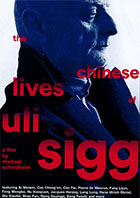
The Chinese Lives of Uli Sigg 2016
Distributed by Icarus Films, 32 Court St., 21st Floor, Brooklyn, NY 11201; 800-876-1710
Produced by T&C Film AG
Directed by Michael Schindhelm
DVD, color, 93 min., German with English subtitles
High School - General Adult
Art, Art History, Biography, Chinese Art, Chinese History, Political Science
Date Entered: 02/12/2018
Reviewed by Linda Kelly Alkana, Department of History, California State University Long BeachToward the end of this fascinating semi-bio documentary of Uli Sigg, a Swiss businessman, diplomat, and art collector, art curator Victoria Lu, one of its well-credentialed commentators states that China’s last forty years have witnessed global and historical social, political, industrial and cultural changes at an unprecedented scale, and that these changes can be viewed by looking at its art. Uli Sigg is introduced as the most significant individual in the art world for saving and collecting Chinese contemporary art, as well as promoting Chinese artists.
The Chinese Lives of Uli Sigg visually documents the changes China undergoes as it traces Uli Sigg’s interactions with the Chinese business, political and art community. Sigg goes to China in 1979 with the Schindler Group Company as part of the first Western industrial joint venture in the PRC. Once he successfully concludes his business dealings in China, Sigg becomes its Swiss Ambassador and begins to collect art. He furnishes the Swiss Embassy and soon his residence with contemporary Chinese art, even saving murals from destruction as they come down with the country’s modernization. Eventually Sigg has the world’s largest collection of Chinese contemporary art, much of which he ships to his manor in Switzerland.
Two strands run through this film: first, the on again off again relationship of the business community with China as the PRC undergoes its own political changes, and second, the changing nature of art as it deals with censorship, particularly after the Tiananmen Square crackdown. A strength of the film is the presence of the artists including Ai WeiWei, Cao Chong’en, Cao Fei, Gang Lijun, Feng Mengbo, Hu Xiaoyuan, Qiu Xiaofei, Shao Fan, Wang Guangyi, Zeng Fanzhi, and pianist Lang Lang. They discuss their debt to Uli Sigg as a promoter of contemporary Chinese artists, but they differ as to where the collected art should be displayed. Ai WeiWei, for example, argues that art and literature should question social authority and is, thus, critical of giving the art back to the PRC, while others believe the art should be returned to China. As it stands now, Uli Sigg’s large collection will be housed in the new M+ Museum for the Visual Arts in Hong Kong due to open in 2019.
The film is beautifully shot. The contrast between images of urban China in 1979 with those of today’s skylines is a testament to China’s industrial changes. The interviews with the artists and the images of their art are aesthetically and intellectually pertinent. Although many of the people interviewed reference the specific decades they are discussing, the film would be stronger with a little more historical background, since these changes in history are important for the art scene. Nevertheless, The Chinese Lives of Uli Sigg is a good venue to view contemporary Chinese art through the Western eyes of its promoter.